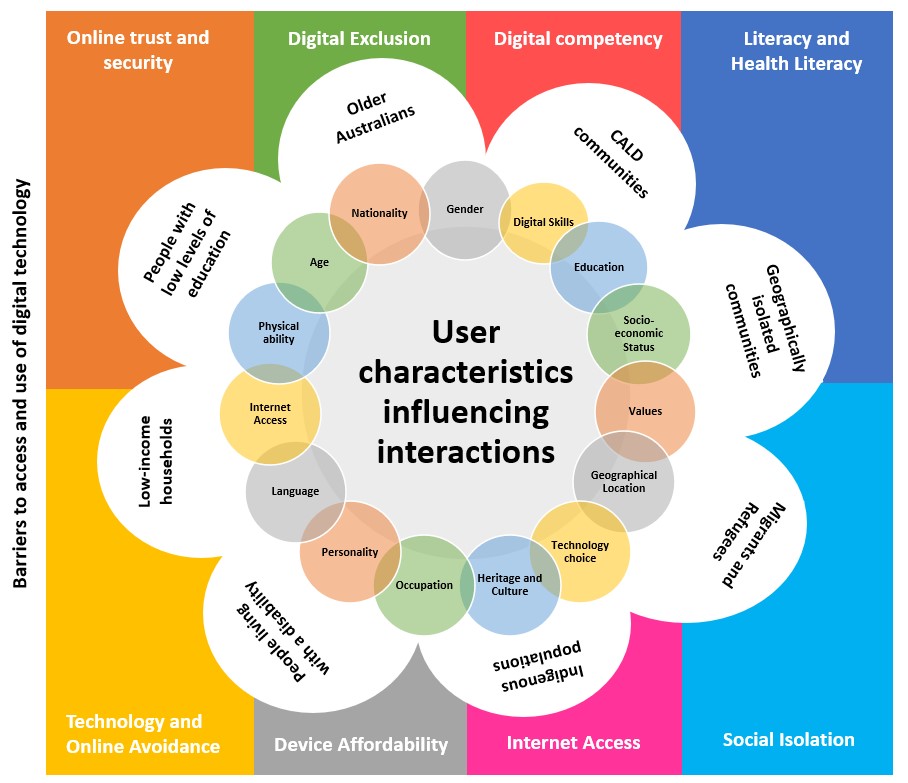For many of us, using technology or accessing the Internet has become second nature; we rarely think about how to turn on and use our computers, laptops or phones to keep up to date with the latest news or find the information we need. If this is the case, you are in the majority of the population who are ‘tech-savvy’. Tech-savvy people are comfortable online and can interact with technology to get things done with little or no help. However, many Australians do not share the same experience accessing or using digital technologies. Instead, they are living on the wrong side of the digital divide.
Does everybody have equal access to technology?
As technology and the Internet become more affordable for Australians, it is important to recognise that increasing access to the digital environment is not the same as digital equity. Success online is not determined solely by owning and having the ability to use a technological device. To benefit from the use of technology requires a person to 1) afford devices, broadband or mobile data, 2) understand how the Internet and connected systems, services and interfaces work, 3) have the operational skills to use digital interfaces, and 4) ability to understand the information provided.
For many of us, COVID-19 was annoying because it required us to move all aspects of our life online, which we managed seamlessly. Unfortunately, this was not the case for over 6 million Australians who experienced difficulties accessing or using technology due to their life circumstances. For many people, this will continue to impact their ability to be digitally engaged, as many financial, social, health and communication services have rapidly adopted a digital presence at the cost of their face-to-face business models. Our most vulnerable and isolated communities are overrepresented in Australia’s digitally excluded population [1] and include:
- Indigenous populations
- Culturally and linguistically diverse communities
- Older Australians
- Low-income households
- People with low levels of education
- Geographically isolated communities
- People living with a disability
How do disadvantage, vulnerability and isolation affect a person’s ability to benefit from online information?
A person’s unique characteristics, including their socio-cultural background and lived experiences, influence their ability to understand information, confidence in using or adopting technology, digital capabilities and working interfaces, and ability to afford devices and the internet. These characteristics can support and, when overlapping, create barriers for the person to use and access online information. Vulnerable groups or individuals living in socially or digitally isolated communities, share many characteristics impacting their ability to be digitally engaged or connected with important information or services, many of which can improve their health, well-being, and social connections (Figure 1).

How can user testing and usability testing help?
All technology developers have a role to play in supporting communities of users who experience difficulties accessing, using or understanding online information. Evaluation is a key activity undertaken during development that can improve the user experience. For example, developers can evaluate interface accessibility (optimising the interface for people living with a disability and using assistive technologies) and usability by assessing task completion, ease of use, and satisfaction. Usability testing and user testing are user-based evaluation methods directly involving people who represent technology users. Both activities generate meaningful feedback from participants. Developers can use these responses to re-design interfaces to better support the needs, requirements and abilities whilst managing expectations of the intended audience. Feedback from people with diverse backgrounds can provide an opportunity to understand interactions from a very different user perspective. Developers can find ways to improve the interface which can be missed when only evaluating tech-savvy participants.
Furthermore, by including those who face barriers within usability samples, gives developers an opportunity to improve interfaces for everyone. This can be achieved through observing behaviour, listening to feedback, and asking questions about how those who have a lived experience of navigating digital inequities. Inclusion can also be a mechanism for change. Encouraging involvement in technology evaluation empowers communities to demand a say in strategies and policies and shapes the digital journey to ensure all Australians are invited along for the ride.
Author: Amanda Adams, researcher with the Research Centre in Palliative Care, Death and Dying at Flinders University and research associate for End of Life Directions for Aged Care Project.
Figure description:
Figure 1. The relationship between a person’s characteristics influencing successful interactions with technology and examples of Australian communities whose overlapping characteristics contribute to their digital exclusion.The diagram also presents the eight common barriers to digital technology experienced by vulnerable and isolated Australians due to their socio-cultural background and lived experiences.
References
- Thomas, J., Barraket, J., Parkinson, S., Wilson, C., Holcombe-James, I., Kennedy, J., Mannell, K., Brydon, A. (2021). Australian Digital Inclusion Index: 2021. Melbourne: RMIT, Swinburne University of Technology, and Telstra.